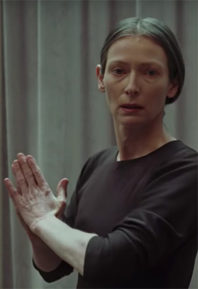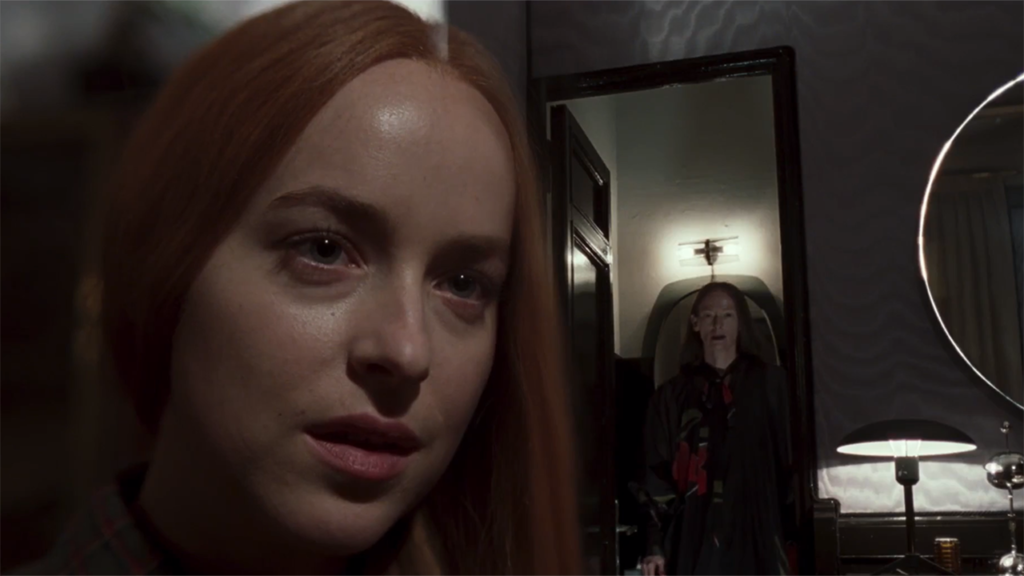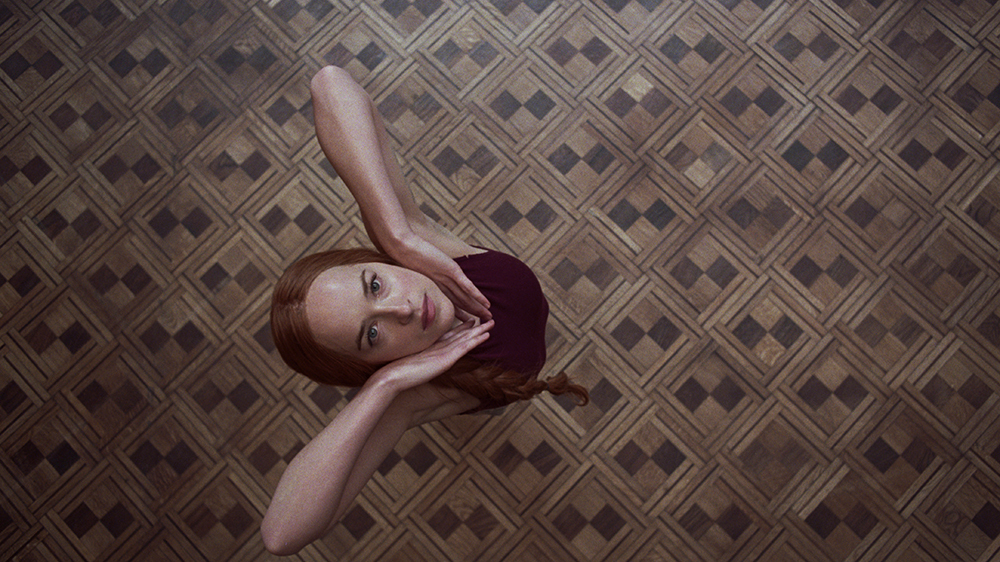
Spoilers for “Supiria (2018).
If I were to hesitate a guess at the word most frequently associated with cinematic remakes, it would likely be sacrilege. Sacrilege, as in how dare they remake this certifiable classic that we all know and love. The reaction to most remakes exists somewhere between outright derision and a peculiar confusion. This theory usually corresponds best to the original’s fans. Those with strong ties to the original source material trying to grapple with the necessity of such an act. When I first heard of Guadagnino’s Suspiria remake, this was a camp I found myself firmly entrenched into. I was skeptical, and considered such an act bordering on sacrilege. I was also very, very wrong.
Alas, I’ve buried the lead somewhat. Welcome to ‘Big Hot Mess’, a (fingers crossed) bi-monthly pseudo-think piece column of sorts, with the intended goal being to deconstruct a supposedly messy film each time out. We’re looking at taking deep dives into the films that challenge us, confound us, irritate us, and yet, we find ourselves compelled towards. The classic one star vs. five-star audience dividers, and why they carry such strangely fascinating weight in our minds. We’re starting here, because for some inexplicable reason this was ultimately my favourite film of the calendar year 2018. Thus, Suspiria (2018) will act as a sort of litmus test for both of us in some sense. You’ll actively get a sense for what my personal sensibilities are, and I’ll get a chance to test out what I think this column looks like.
I previously mentioned my skepticism regarding a potential Suspiria remake for two reasons. The first being a distinct lack of belief in the possibility of such a project having success. Anyone who has seen Dario Argento’s original cult classic understands the complexity of the nightmarish colour scheme. Luciano Tovoli’s emphatic use of classic technicolour imbibition processes generate a world akin to a macabre Oz, rendered through the lens of a violent acid trip. The visual aesthetic seems unreplicable, and most attempts at re-creation would likely prove to be only a poor facsimile. The raw commitment Argento and his team engage in through the creation of such an inescapable nightmare, is largely what makes a film with some noticeably distinct elements of cheese (the ADR in particular is painfully 70’s Italian) the canonized horror piece that it is.
My other reason for such skepticism largely pertains to the reality of horror culture in the 21stcentury, and the reality of inexhaustible remakes. For years, rumours of a David Gordon Green reimagining of Suspiria were so ubiquitous that despite the noticeable fan outcry, a Suspiria remake remained firmly a when as opposed to an if. Someone would inevitably spit out a carbon copy of Argento’s original, diluted visually but escalated in terms of the violence, the old “all of the before but with the added now” that so frequently finds itself attached to just about every modernized updating, but now applied to Argento’s neon bloodstained story skeleton. Such a project would largely miss the ethos of Suspiria; that Suspiria is ultimately one idea—Alice in Wonderland, but a nightmare—so ardently committed to aesthetically that the films pockmarks largely fall away. There’s a simplicity to Argento’s original that allows the film’s greatest strengths to shine through.
Curiously, Guadagnino’s remake slightly misses this ethos as well. Plot wise, the barest essentials of Argento’s original have been replicated. This is still the story of a young American girl named Suzy Bannion (Dakota Johnson), who finds herself enrolled at a German dance academy that is secretly run by witches, the head of which is the esteemed Madame Blanc (Tilda Swinton, in one of three roles). That’s about all that remains from the original, aside from a brief Jessica Harper cameo. Here, Guadagnino takes the opposite approach to “one idea heavily committed to,” and instead attempts to commit to all the ideas as ardently as he possibly can.
What’s messy about Suspiria (2018) isn’t necessarily the couple of extremely grotesque scenes, the grey on grey colour palate, the (somewhat unnecessarily) added backstory, or the restitution of the setting to mere feet from the Berlin Wall, but rather, that all of the above would be congealed into a remake of Suspiria. Tilda Swinton is playing three roles, one as the old doctor under literal layers of latex. Forget Alice in Wonderland, how about Infinite Jest but a nightmare instead? This is largely what I believe is off-putting to most people about Suspiria (2018). To cherry pick an example, Manolha Dargis of the New York Times claims most of Suspiria (2018) historical references were “strictly ornamental, an emblem of meaning by (hoped for) association,” implying that the sheer abundance of references and thematic ideas is merely compensation for the fact that it doesn’t really mean anything.
Painfully, I admit that there is probably a kernel of truth in such an accusation. Pretentious is the word most critically invoked to discredit Suspiria (2018). There are supposedly far too many ideas for explicitly one correct interpretation. Worse, to some these ideas commit the grand sin of being ideas for the sake of ideas. Yet, for all Guadagnino misses in relation to the simplicity of Argento’s Suspiria, Guadagnino makes up for it on the commitment side of the equation. Namely, he commits to staunchly undermining your expectations of what Suspiria is at every turn. The necessary prerequisite text isn’t the inner workings of the Baader-Meinhof Gang, but simply Suspiria itself. Every decision is oppositional. The obvious one is the difference in colour scheme, whereby Guadagnino and cinematographer Sayombhu Mukdeeprom (best known for his work on Apichatpong Weerasethakul’s Uncle Boonme Who Can Recall His Past Lives and Guadagnino’s previous feature Call Me By Your Name) have squeezed the colour out of the frame as if they were juicing a pomegranate. Tom Yorke’s melancholic reverberations replace Goblin’s iconic prog rock. Even some of the smaller details have been reversed and changed. Argento’s hyper-stylized and hyper-giallo kills have now been replaced with two distinctly grotesque scenes. “When you dance the dance of another… you empty yourself, so that her work may live within you,” claims this version of Madame Blanc. This feels like Guadagnino’s plea for understanding of a film he later claimed “was his most personal” film.
By creating such oppositional discourse, Guadagnino is able to play with your understanding of the original text. Johnson’s Suzy Bannion is the last major difference from Argento’s original. Johnson is a full four inches taller than Jessica Harper. She has bright auburn hair, and carries herself with indistinguishable poise. Rewatching Suspiria (2018) it struck me as amazing that you really don’t pick up on the fact that there’s something enigmatic to her. The name Suzy Bannion carries connotations of innocence and eventually found hidden strength. It doesn’t connote mother of all witches. The actual twist itself shouldn’t nearly work as well as it does. But it works, because Gaudagnino’s awareness of the foundations he’s working from allow him to find where to dig into. He knows where to deviate within his remake and does so to exquisite degrees.
The convex mirror Guadagnino takes to Suspiria functions here to build an entirely different piece of cinema. There’s much less outcry in the form of “I can’t believe they did that to Suspiria,” and much more befuddlement. It’s a mess, but in the context of the film maybe that’s a necessity for the present. “We must break the nose of every beautiful thing,” Blanc instructs Suzy, suggesting that art and expression must find different avenues to match the worlds they presently inhabit. Art can take on many different forms of expression. It can mutate, from stunning beauty to grotesque nightmare. This greyscale film isn’t greyscale from beginning to end. It undergoes it’s own mutations, from the beautiful original text to its all together too messy conclusion. Colour eventually filters back in, but the result is possibly more disturbing than any second of Argento’s original. Suspiria (2018)’s conclusion can be best described as grisly to the point of excess. Yet, even here Guadagnino’s art filter doesn’t stop. Arguably, the disjunctive frame undercrank renders an even uglier and most obtuse image. This is art, but with a broken nose spurting on the celluloid canvas. It sure as hell ain’t sacrilege.




